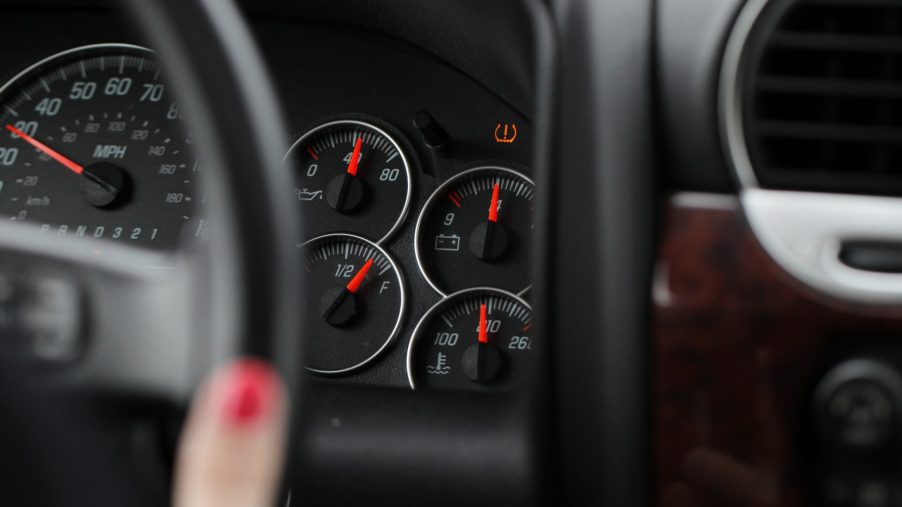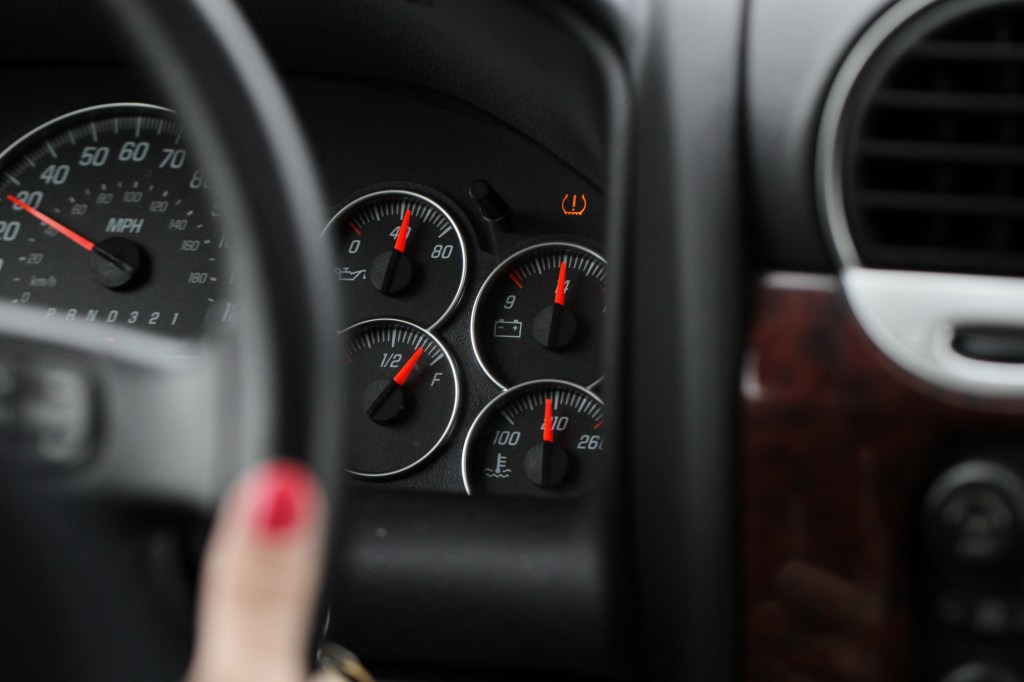
Can You Reset Your Car’s TPMS Sensors Yourself?
It’s never fun when a warning light turns on, but not all car repair tasks are as opaque as diagnosing Check Engine lights. And while some repairs are best left to the professionals, others are significantly more DIY-friendly. One job that usually falls in both categories is resetting your car’s tire-pressure monitoring system sensors. So, if you think your TPMS sensors need a reset, here’s what you need to know.
If your TPMS light won’t go off, you might need a reset

Usually, when your tire pressure warning light turns on, the solution is simple: check and adjust your tire pressure. However, there are some situations where that might not be enough. For example, if part of the TPMS, such as the sensors, fails and/or dies. Or, if you just installed new sensors, your system needs a reset.
If your car has an indirect TPMS, it measures tire pressure through the car’s ABS. But if it has a direct system, then it has dedicated pressure sensors installed on each wheel. These sensors communicate with a central module wirelessly through radio waves. And when one breaks or its battery dies, it’s sort of like unplugging an accessory from your computer’s USB socket.
Sticking with the computer analogy, when you plug the accessory back in, your computer takes a moment to recognize it. And depending on what it is, it might need to download or update certain bits of software. That’s basically what happens when you install new TPMS sensors in your car: it knows they’re there, but it can’t quite do anything with them yet.
That’s where the TPMS reset comes in. First, it activates and programs the new sensors to work for your specific car’s tires and wheels. Then, it inputs each sensor’s location to your car’s computer and lets it relearn the new sensors’ signals, The Drive explains. And presto, your TPMS is reset, and the warning light should turn off shortly.
You don’t necessarily need a dedicated TPMS reset tool
It’s worth noting that your tire pressure warning light likely won’t turn off immediately after a TPMS reset. It usually takes a few minutes of driving above a minimum speed; the time and speed vary between models. But after the relearning period passes, the light should wink off.
OK, so that’s the ‘what,’ now here’s the ‘how.’ Some cars reset their systems automatically or have dashboard-mounted reset buttons or display menu items. However, it’s worth noting that even these cars might have multi-step reset procedures, MotorTrend says. That includes making sure the car learns each sensor’s wheel location. And yes, this means you must reset your TPMS sensors every time you rotate your tires. But if your car doesn’t have a dedicated button for that, you can often force it to relearn by pulling the negative battery cable off for a few minutes.
Oftentimes, though, a TPMS reset requires additional tools specifically to program the sensors. For some cars, such as the C5 Corvette, this is nothing more than a big magnet that you wave over the sensors, MT reports. But others need specialized electronic tools for the job.
How much does this cost?
If you’re installing new TPMS sensors at a dedicated tire shop, the reset and/or relearn usually is an extra $30-$50 charge. But unless your sensors break prematurely and/or you have an extra set of wheels for winter, you won’t pay for a reset often. Also, even if you do have two sets of TPMS-equipped wheels, once the sensors are programmed, all that’s left is the relearning process. And as noted earlier, sometimes that just requires a short battery disconnect.
However, if you want to take the process—and costs—into your own hands, that’s certainly possible. Depending on how comprehensive your toolbox is, you might even have all the tools you need. For example, that bit about the Corvette TPMS sensor magnet? MT says “a large speaker magnet will usually do the job.” In addition, some OBDII scanners can perform TPMS resets.
As for dedicated reset tools, they range in price depending on capability and complexity. And keep in mind that some tools can only put the ECU in relearn mode, but not program the sensors themselves. But while some pro-grade tools often break the $500 barrier, the average home mechanic doesn’t need anything that complicated. Still, expect to shell out around $150-$200 for a quality TPMS reset tool, The Drive reports.
In short, resetting your car’s TPMS sensors might take some extra tools and time investment. But it’s definitely something you can do yourself.
Follow more updates from MotorBiscuit on our Facebook page.


